Crested geckos, also known as eyelash geckos, are among the most-sought after reptiles for their unique coloration and low-maintenance lifestyle. They are excellent pets for individuals or families seeking unique lively lizards to look after.
However, Cresties thrive in very specific environmental conditions. These conditions are important to understand prior to adopting a crested gecko.
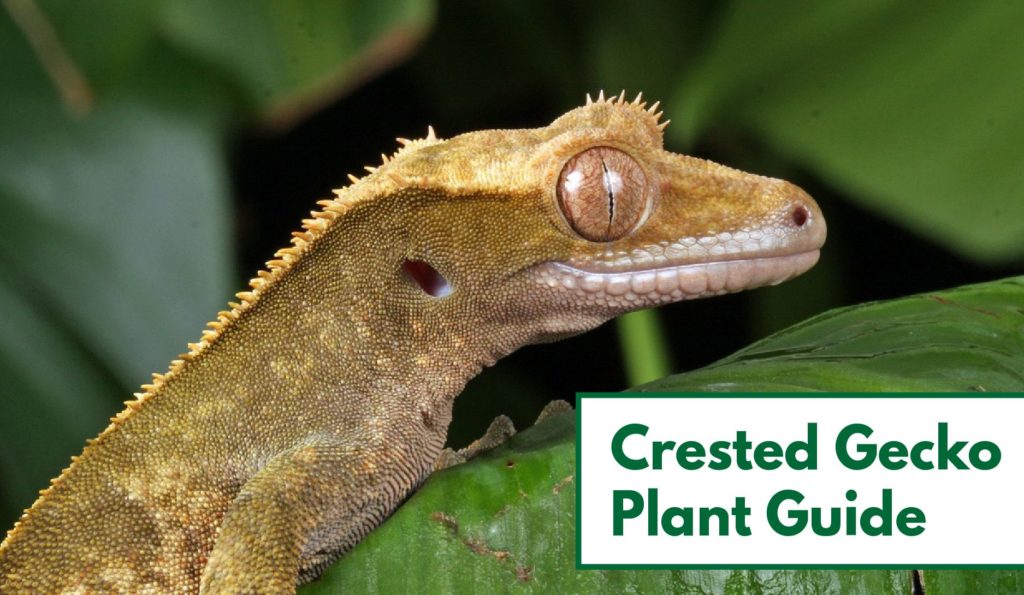
When creating a habitat for your crested gecko, there are several factors to take into consideration – one of the most important of these being the plants used to create the vivarium (living terrarium).
Read on for more information regarding the best vivarium plant choices for crested geckos.
Quick Navigation
About Crested Geckos
Crested geckos are small lizards native to a small cluster of islands in the South Pacific. They range from earthy red brown to forest green in color, and grow up to 10” in length.
Cresties are nocturnal and live in a temperate climate. They feed primarily on fruit and insects. The most striking physical feature of the crested geckos is their namesake crests that run on either side of their diamond shaped heads.
They are generally docile and easy-to-handle pets. Due to their sticky toe pads, cresties are able to climb, and need a habitat which allows them to do so.
When creating the crestie’s vivarium, the natural environment where crested geckos are from should be used as a template in order to maximize their health and comfort.
The selected plants should be sturdy enough to hold the weight of the geckos while climbing, and should be ideally be well-suited to a humid, temperate environment.
The plants below are ranked according to important criteria regarding the plants’ sturdiness of the stalks and leaves (for safe climbing), the hardiness of the plant (how well can it co-habitate within an active lizard vivarium), and the maintenance level (low maintenance and low-light plants).
13 Best Plants for Crested Gecko Vivariums
Here are 13 awesome plants that will do great in any crested gecko enclsoure – ranked by sturdiness, hardiness, and required maintenance!
Pothos
Pothos is a rapid-growth vine with a vibrant green color and large leaves for climbing. It is best used on the lower levels of the vivarium to create natural hiding spots for geckos.
Sturdiness: Sturdy. The pothos vine is low-lying which allows it to distribute the weight of a crested gecko and avoid breaking under its weight.
Hardiness: Pothos grows rapidly and is tolerant of the humid environment that crested geckos require. It can withstand temperature and moisture fluctuation as well as gecko activity.
Maintenance: Low-moderate. Pothos has moderate needs for water, and will thrive best in damp soil conditions. It is not particularly picky regarding lighting conditions, but will display brighter coloration if provided with brighter light. Overall, pothos is a low maintenance plant for the vivarium.
Bird’s Nest Fern (Asplenium nidus)
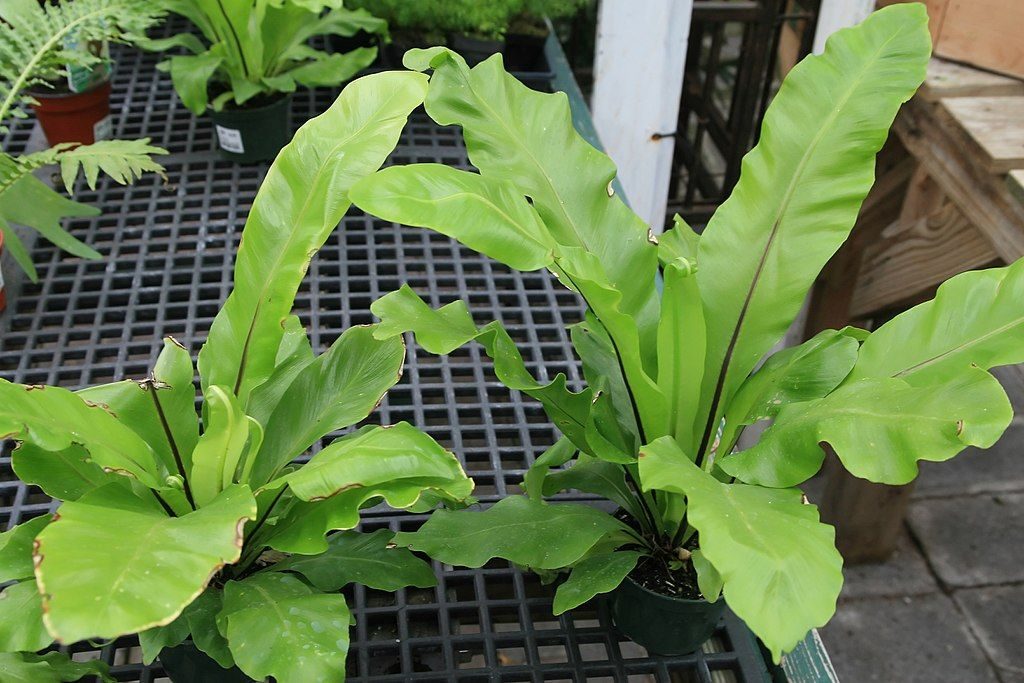
The Bird’s Nest Fern is a unique plant, known for its wavy foliage and rounded growth, making it appear like a nest! This plant is a rapid-grower and is best suited for the mid-ground of the vivarium, as it is tall but can spread wide.
Sturdiness: The Bird’s Nest Fern is not ideal for climbing, but it’s center can support the weight of a gecko. It is best placed in proximity to other, stronger plants, and kept small for maximum sturdiness.
Hardiness: Narrow, waxy fronds can go for some time without being watered, but are impervious to the humid climate of the gecko vivarium.
Maintenance: This tropical plant prefers shade and constantly wet soil. As long as it is kept moist, it is a low-maintenance, hard-to-kill plant.
Pink Quill (Tillandsia cyanea)
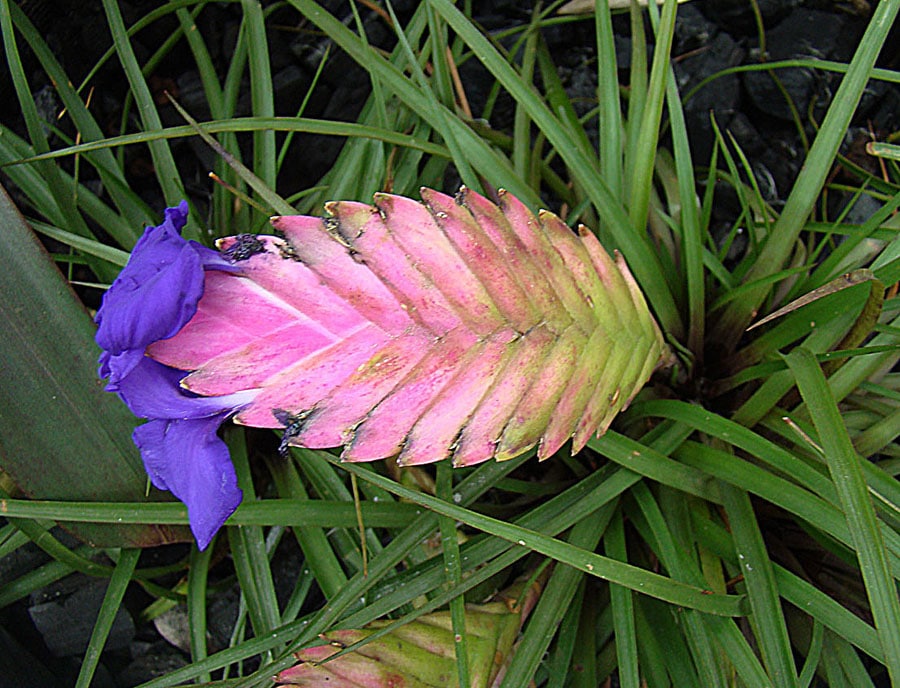
The pink quill is a popular choice for the pop of color it introduces to the vivarium. This plant features thick pink branches amidst thin green fronds. The pink portions later give way to violet flowers which are not harmful to geckos.
Sturdiness: The pink quill is a sturdy plant which can easily withstand the weight and climbing tendencies of an adult gecko.
Hardiness: These pink blooms are hardy and will not wilt in the high-moisture vivariums.
Maintenance: Low-maintenance. These plants can actually be kept as air plants, but are also happy with bright lighting and a bit of water 1x weekly.
Dwarf Umbrella Tree (Schefflera arboricola)
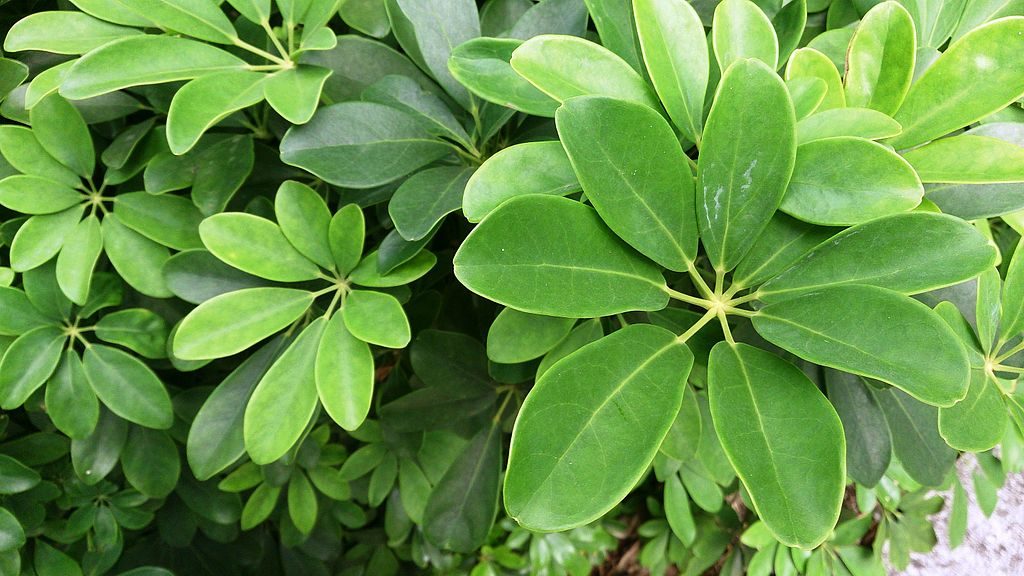
The dwarf umbrella tree is named for the beautiful dark green foliage which fans out in a symmetrical circle, making it an eye-catching vivarium addition. A hearty grower but easy to prune, this tree is an excellent candidate for climbing.
Sturdiness: The trunk of the umbrella tree is perfect for gecko climbing!
Hardiness: The umbrella tree thrives in humid vivarium environments, and the trunk will stand up to typical gecko wear and tear.
Maintenance: Low-moderate. Umbrella trees are tolerant of neglect, and can survive with bright or low light, as long as it is not placed in standing water. It prefers time to dry out between waterings.
Chinese Evergreen (Aglaonema)
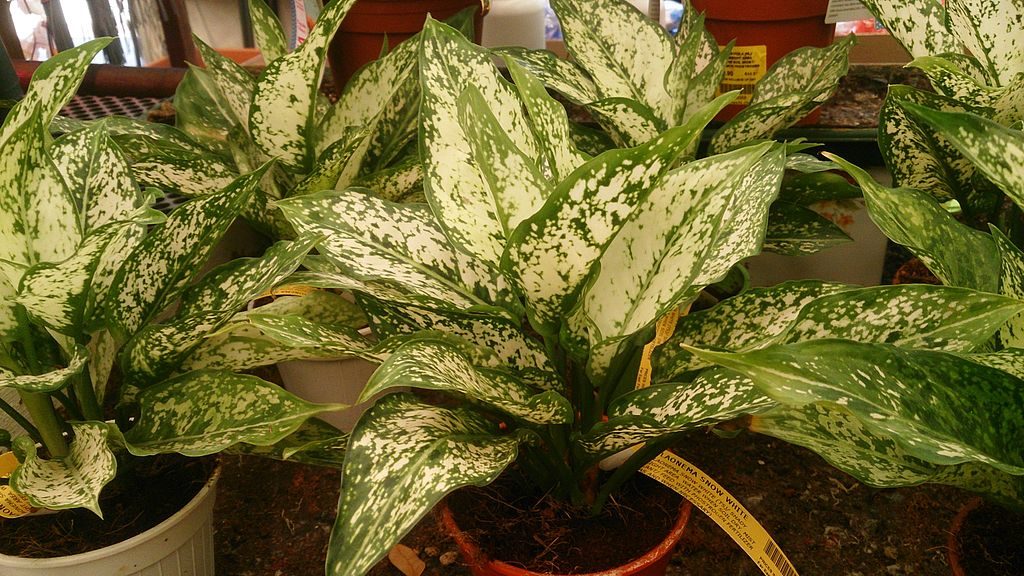
The Chinese Evergreen is a perfect compromise of color and style with a low-maintenance side. It thrives in the moist vivarium environment, but should only be placed in the largest of vivariums as it can quickly take over due to its rapid growth. It is best planted in the background of the tank.
Sturdiness: The large fronds of this evergreen are sturdy enough to support prolonged gecko climbing.
Hardiness: Chinese Evergreens are at home in the humid tropical vivarium setting and are wilt-resistant.
Maintenance: These plants are very low-maintenance, and prefer not to be in standing water.
Petra (Codiaeum variegatum)
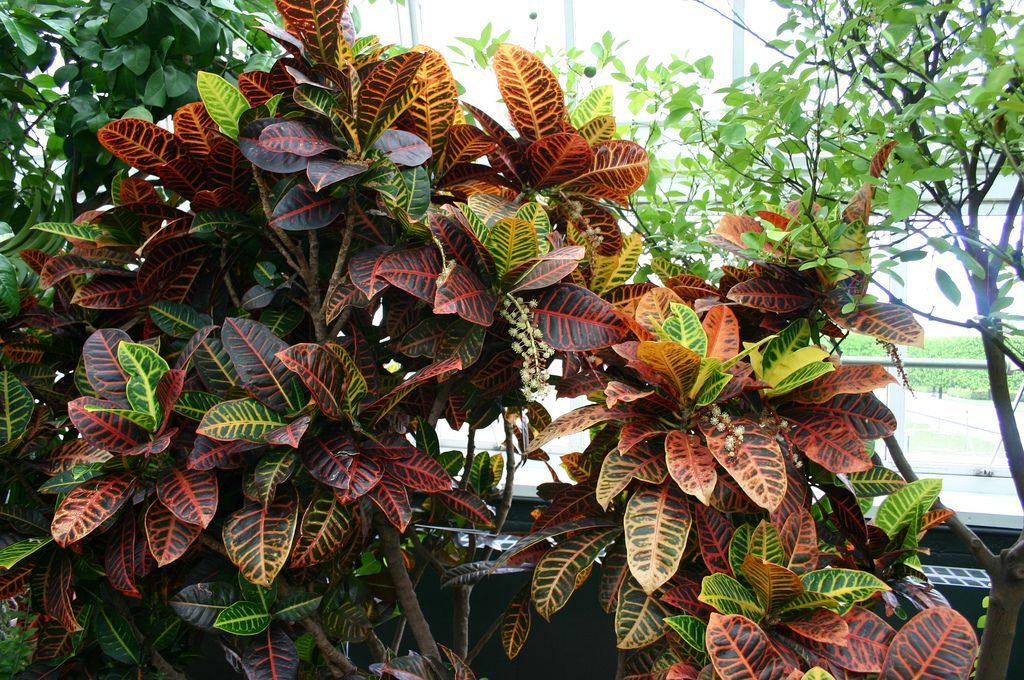
The petra features broad, highly variegated fronds which provide a sturdy climbing structure as well as a colorful vivarium feature. Won’t disappoint!
Sturdiness: The broad leaves and woody stem of the petra make it ideal for supporting the weight of a crested gecko. It can be used as one of the main structural plants in the vivarium.
Hardiness: This plant thrives in the humidity of the gecko vivarium, but can be susceptible to shock with environmental changes. Sudden dropping and re-growth of leaves is normal.
Maintenance: Moderate. Requires soil to dry out between waterings, but is tolerant of humidity. They are flexible regarding lighting.
Mother-In-Law’s Tongue (Sansavieria laurentii)
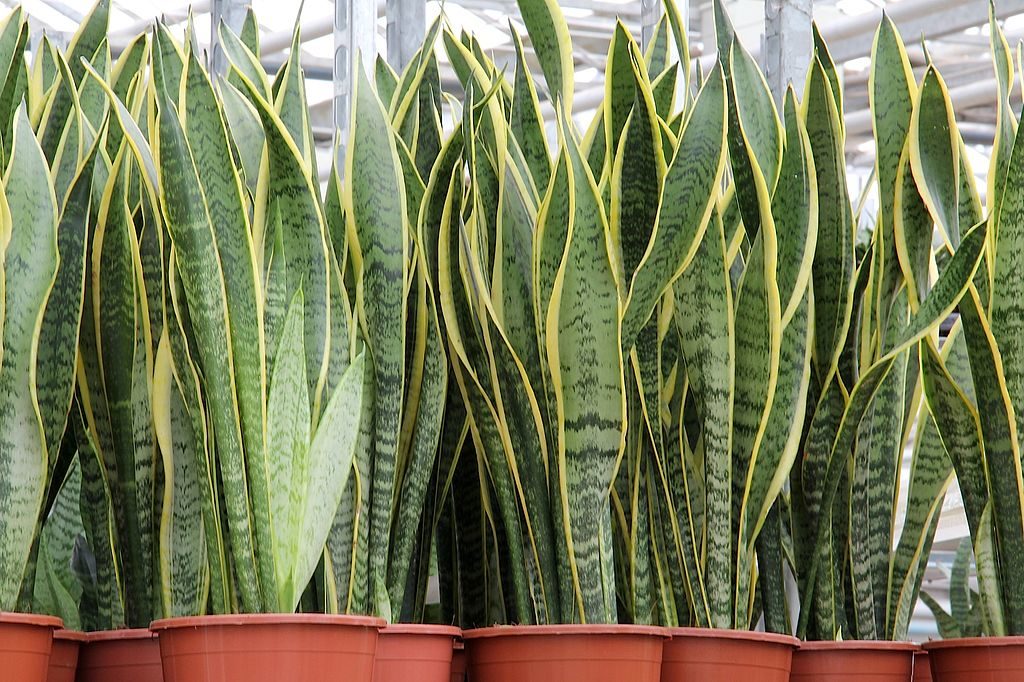
Also known as the Snake Plant, this plant is unique for its upright shoots that are sword shaped and bright green in color. It can be tricky to keep in small vivariums and is recommended only for the tallest of gecko enclosures.
Sturdiness: The leaves of the Mother-In-Law’s Tongue are attractive but not ideal for climbing. This serves as more of a decorative plant, though it can be used as a hiding spot as well.
Hardiness: The unique shape of the Snake plant’s leaves is difficult to damage, making it one of the hardier plants on this list.
Maintenance: This plant is relatively low maintenance, it simply requires low light and a bit of water.
Jade Jewel (Dracaena fragrans)
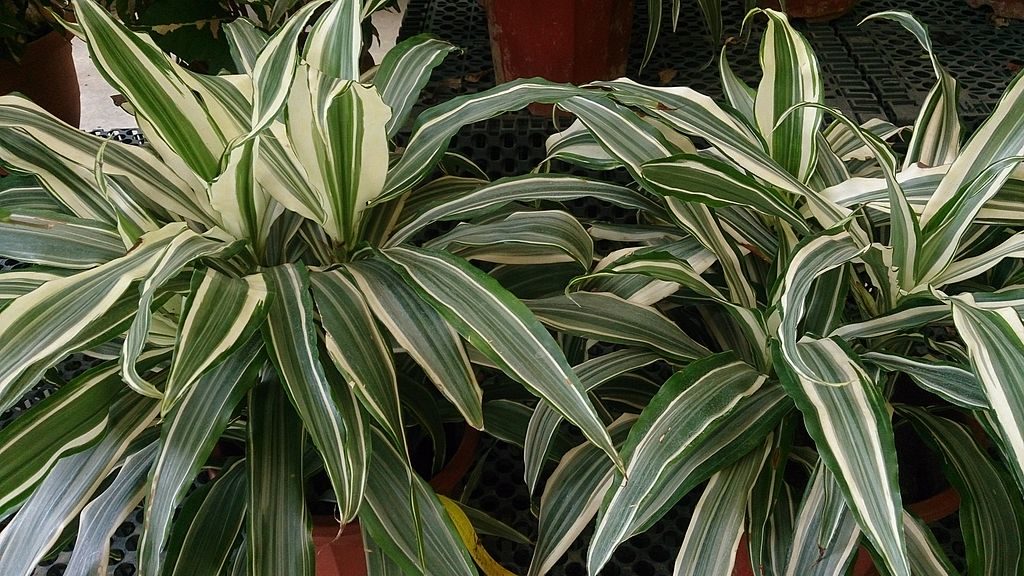
A classic vivarium choice, the Jade Jewel thrives in crested gecko habitats. This beautiful plant is a slow grower which can be placed anywhere in the enclosure.
Sturdiness: The Jade Jewel has large striped green and white leaves capable of supporting geckos for climbing.
Hardiness: This plant is hardy and does well in gecko habitats.
Maintenance: The Jade Jewel is low maintenance and can tolerate any lighting as long as it has well-draining soil.
Bromeliads
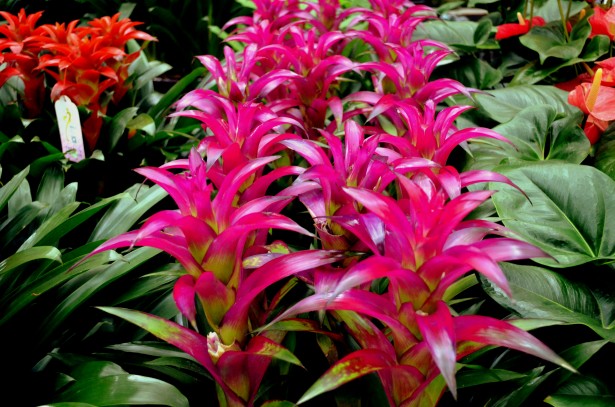
Another famous gecko vivarium choice, Bromeliads come in a multitude of varieties. They are truly unique, as they do not require any soil to grow in. In their natural habitats, they actually grow on the sides of trees. There are a multitude of Bromeliad plants worldwide, but several of these species can be well-suited to vivarium living.
Sturdiness: When placed on the side of a woody or cork base, the bromeliad is a sturdy background plant with long colorful fronds.
Hardiness: The bromeliad is a relatively hardy plant but requires some effort in the initial planting stages.
Maintenance: Moderate depending upon the species. Those which can grow as air plants are the lowest maintenance, thriving with little water and adequate air flow.
Elephant Ear (Alocasia polly)
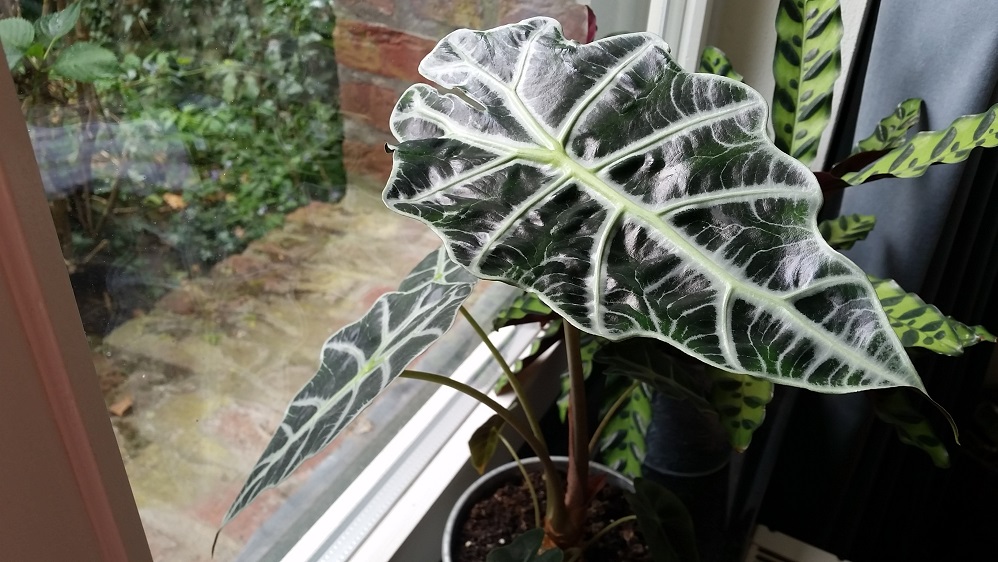
Elephant ears are known for their fabulously large leaves with bright coloration, typically silver-veined against light green. They also come in red and purple hues. These plants can be tricky but are rewarding for their striking appearance!
Sturdiness: The leaves of the elephant plant are large and sturdy, perfect for gecko basking. The stems are relatively strong as well, preventing drooping.
Hardiness: When properly cared for, elephant ears can thrive in the vivarium environment, but they require specific care to stay healthy and may not be ideal for beginners.
Maintenance: High-maintenance (but rewarding!). The elephant ear is a tropical plant which lives in the understory, so it requires bright but indirect sunlight and humidity. It should be kept moist at all times but the roots should not be submerged in water.
Lemon Button Fern
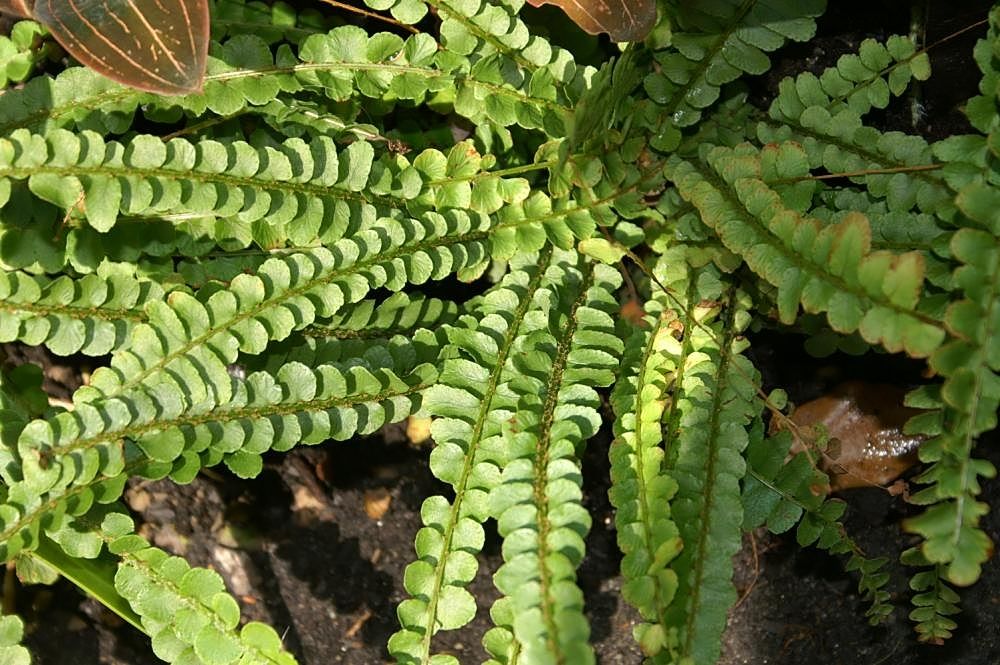
The lemon button fern gets its name from the light lemon scent the leaves give off. This fern is best used as a background plant in the vivarium, to add to the visual appearance of the tank. Their tiny, bright-green “button-shaped” leaves brighten up any habitat.
Sturdiness: While attractive, these plants are not quite sturdy enough to support a gecko’s weight.
Hardiness: These plants thrive in the humid environment of the vivarium, and co-habitate well with geckos.
Maintenance: As long as they are kept in moist soil, these plants will stay happy and bright!
Concinna Prayer Plant (Calathea concinna)
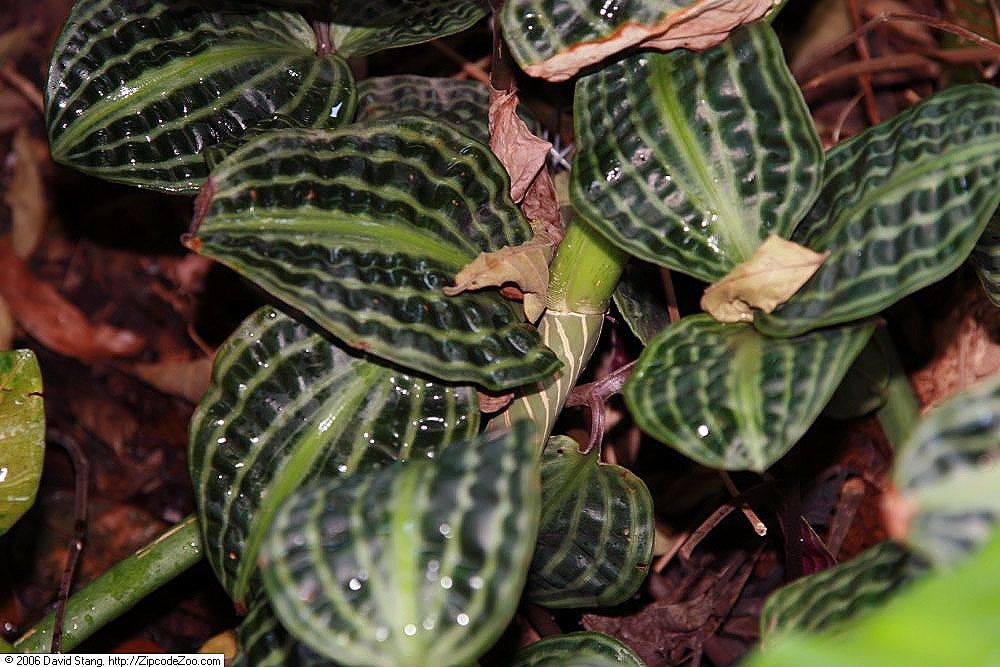
The Prayer plant comes in several varieties, the most common of which features an exotic patterned foliage. It is given its name because its leaves close at night and re-open in the day, folding and unfolding like hands in prayer.
Sturdiness: The broad, waxy leaves of the Prayer plant are ideal for geckos to climb on and enjoy.
Hardiness: This is a hardy plant which originates from the tropics and thrives in a humid environment.
Maintenance: Moderate-high maintenance. These plants require well-draining soil that should be kept moist, but the leaves must be kept dry if possible. The lighting must be low-moderate, as bright lighting can damage the leaves.
Creeping Fig
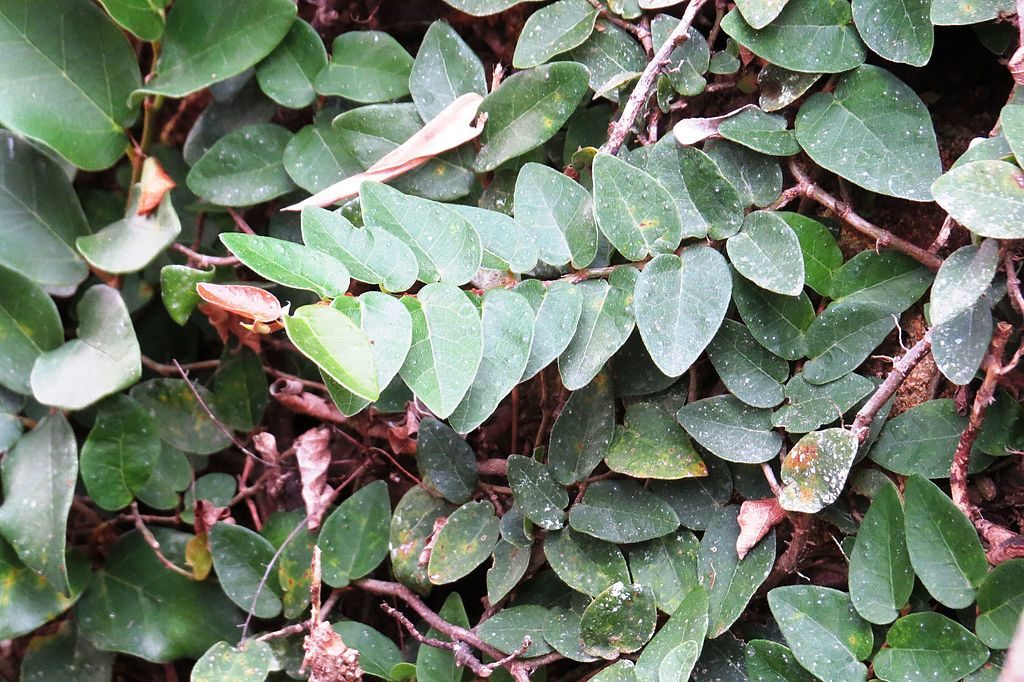
The Creeping Fig thrives as a background plant in vivariums, and acts as a clinging vine which will creep along any surface it can (hence its name). This plant, while attractive, requires extensive pruning to keep it in check.
Sturdiness: The creeping fig is generally used for décor rather than a functional climbing plant, as it has small, delicate green leaves.
Hardiness: This plant is a rapid grower and thrives in any humid environment! Excellent filler plant.
Maintenance: Moderate, as it requires frequent pruning.
Musa Little Prince Banana Tree
This unique tree is capable of producing bananas, but is typically kept for ornamental use. It can grow to be quite large, so it is only recommended for the largest of vivariums.
Sturdiness: The large, sturdy leaves and large trunk of the Little Prince are excellent for geckos to climb on. It is stout and wide, making it a beloved feature for little climbers.
Hardiness: The Little Prince is a hardy tree which can be a fast or slow grower depending upon conditions.
Maintenance: This tree requires well-draining soil but can thrive in any warm environment.
Establishing the Tank
Once the desired plants are selected, it is time to set up the tank.
In order to maintain the health and happiness of both the plants and the geckos, it is crucial to establish the substrate layers of the vivarium properly.
The tank size, substrate layering, and microfauna are all important parts of this process. The size of the tank is dependent upon how many geckos you wish to house.
It is common to keep crested geckos in pairs or trios, with no more than one male in each group as they can become aggressive toward each other.
The tank should be a minimum of 20 gallons, with the rule of thumb being approximately 10-15 gallons of tank space per adult gecko. Taller tanks are ideal for geckos so they will have space to climb. For cresties, the amount of vertical space available is more important than the available horizontal (floor) space.
Preferably, the tank should have front-opening doors for ease of access and cleaning. This will usually allow for more efficient ventilation and circulation of air as well.
The smallest recommended tank size would be 12x12x18”, though 18x18x24 is more common, especially for pairs.
I’d recommend the 18″ x 18″ x 24″ Exo Terra Terrarium is you’re looking for a solid setup.
- Glass terrarium for reptiles or amphibians
- Patented front window ventilation
- Raised bottom frame in order to fit a substrate heater and has a waterproof bottom
To ensure proper air circulation and humidity, the tank should be solid on three sides and have screen on one side, and/or the top. Many tanks have screen front and tops, which is ideal as long as the proper humidity and temperature (60-80°F) are maintained.
Selecting the “Hardscape”
The hardscape is composed of all of the objects that make up the tank’s background. These pieces include décor which is attractive but also functional for the tank’s occupants. It usually includes climbing structures such as rocks, tubes, and faux jungle vines/trees.
The hardscape is usually composed of items which are not living, so that maintenance is lower for these items, as they will be removed and tended to less frequently.
Some tank kits come with pieces of hardscape already in place, but some tanks are simply empty glass boxes which need to be adapted to best suit the needs of the geckos.
In these cases, the rock, cork, or vine pieces can be arranged on the back of the tank and secured using an expanding animal-safe foam spray.
Vines are probably my favorite pieces of utilize in Crested Gecko habitats – they look awesome, and my geckos love them! I recommend the Exo Terra Jungle Vine.
- Age Range Description: All Life Stages
- Included Components: terrarium accessory
It is recommended to utilize a variety of objects to create a stimulating environment for the geckos.
Excess hardened spray should be carved away, and peat or sphagnum moss can be used to cover the spray and any other gaps in the hardscape. The entire hardscape should be dry and fume-free before adding anything else to the tank.
Last update on 2025-12-16 / Affiliate links / Images from Amazon Product Advertising API
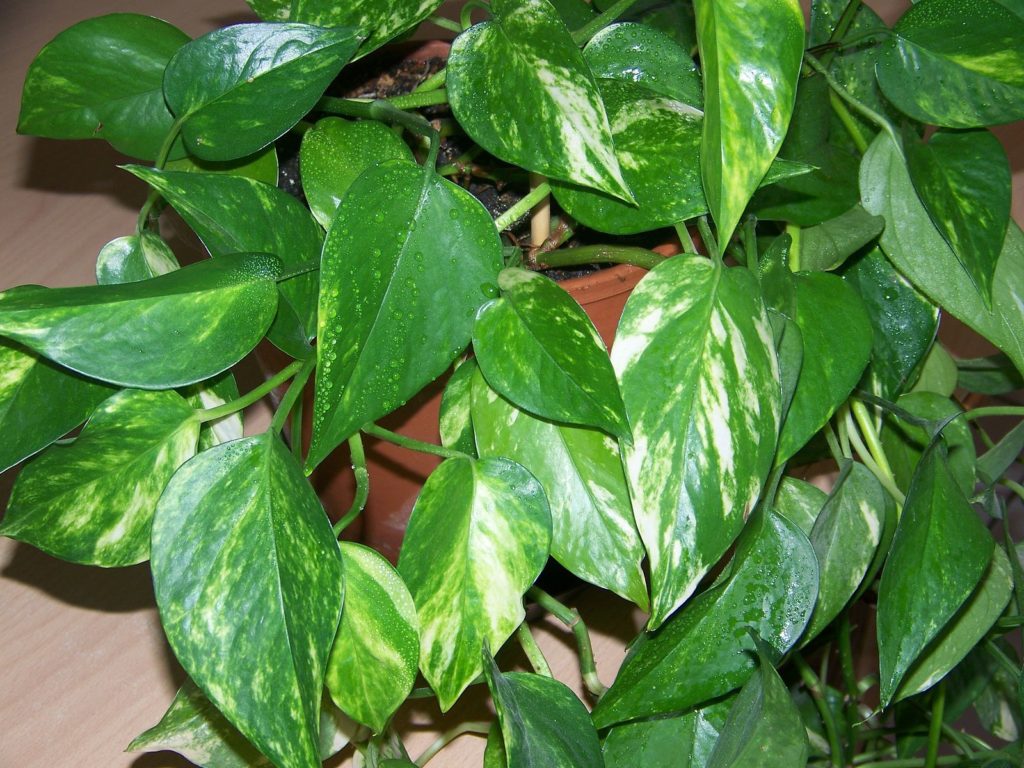


This was very helpful! I have a Leopard Gecko and I have been looking to get a Crestie! 🙂 One thing I would like to ask though is the substrate in a Crested Gecko tank… I know there are layers of either Eco Earth or Earth Mix Arid and Spanish/Peat moss, but I don’t really know what order the layers have to be in and what all the layers have to be. If you could tell me this would really help me 🙂
My vivarium has been doing well for a few years with the bottom few inches of drainage (aqua balls, lava stones, or anything light and porous), then window screen cut to size, then a few inches mixed of any of that fluffy soil layer (EcoEarth or equivalent, sphagnum moss, orchid bark, charcoal, etc.), and topped off with a few dead leaves. NEHERP and a lot of companies sell that soil layer pre-mixed. SerpaDesign makes a lot of terrariums/vivariums on his YouTube channel, if you want an example.
Thank you this has been very helpful